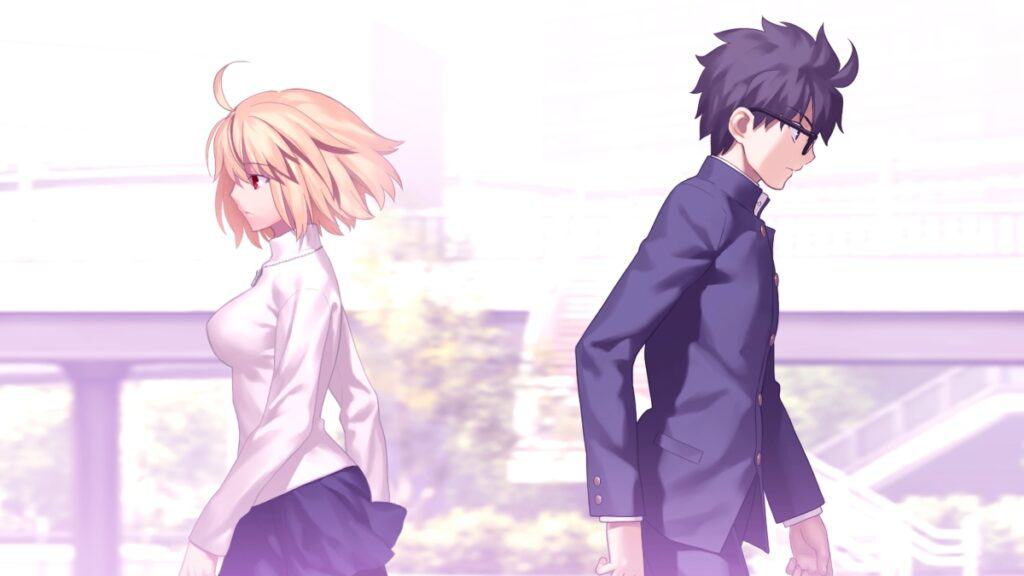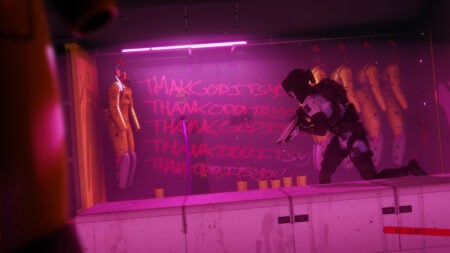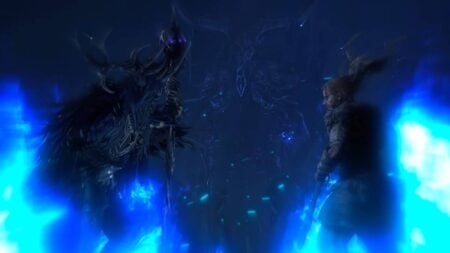Skip To...
In the world of visual novels, Tsukihime is a true gem. Its legacy has paved the path for the Fate franchise and what TYPE-MOON is today. Many new fans might only know the company thanks to the expansion of the Nasuverse with Melty Blood, the appearance of Fate: Unlimited Blade Works, and the Fate Heaven’s Feel movies. However, way before that, we had Tsukihime in 2000. While it took years to reach this side of the pond, and even with the changes for the remake, Tsukihime -A Piece of Blue Glass Moon- shows VN storytelling at its finest. Despite some systems being outdated, it is a cornerstone of the genre and a must-play for visual novel fans.
Previously, the original release remained in the shadows for many years because its distribution was only in Japan. Beyond that, everyone forgot about this version as other TYPE-MOON media overshadowed the game that started it all. But like a phoenix, -A Piece of Blue Glass Moon- rises from the ashes with this western release. Some might not like this remake’s approach in its story and routes, but it is still one of the most memorable and shocking visual novels of all time. Also, and I feel this is something crucial to mention, this VN isn’t for the faint of heart. The gore scenes are highly graphic, and specific topics might be a trigger for many. So, keep that in mind before playing it.
A Deja Vu, With Something Missing
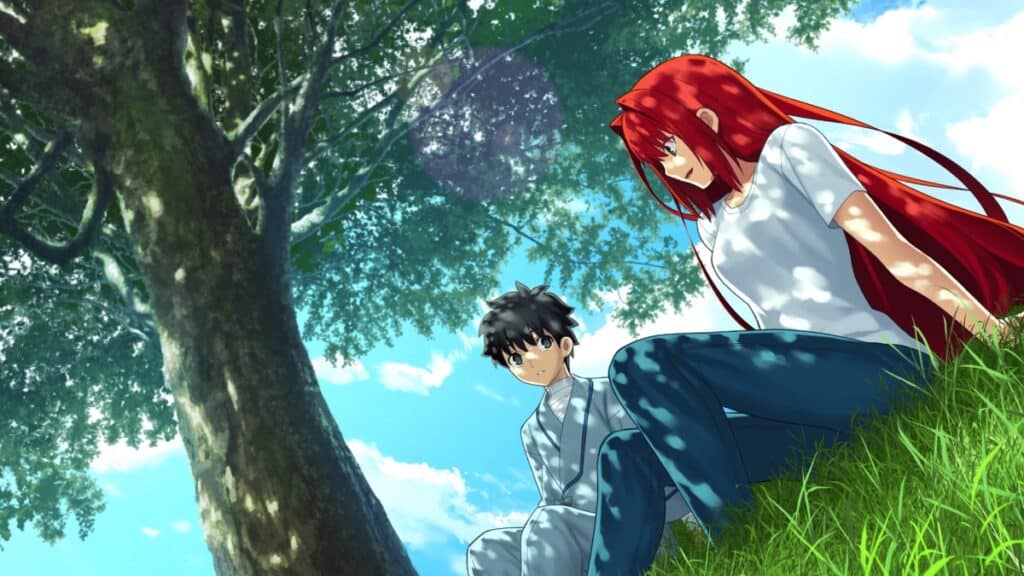
The story begins with Shiki Tohno waking up as a child in the hospital after an accident. This incident is almost fatal to Shiki’s life, and he survives only by a miracle, leaving him in a very delicate condition. Due to the accident’s severity, Shiki begins to see red lines everywhere, lines that can seemingly slash any object regardless of its size and material. In addition to his fragile health, the ability to see these lines also affects his mental state. Fortunately, during his stay in the hospital, he meets his “Master,” who gives him a pair of glasses so he can no longer see the lines. So Shiki can continue his “normal” life … yes, of course.
I’d love to continue delving deeper into the plot, but I can’t. Doing so would ruin the surprise, especially for new players. Yet, that doesn’t mean I can’t tell you what you’ll expect. In short, it is a convoluted mess of occultism, action, teenage drama, and shocking moments that will either make you drop your controller or think twice if picking a particular dialogue option was a good idea. Tsukihime is a web of intrigue waiting for you to untangle it. Even when you do so in the slightest way, there’ll be more mysteries for you to discover.
Although Tsukihime‘s story first saw the light of day 24 years ago, the remake is slightly different. Seeing how most of the routes’ stories are mostly untouched is exciting, but this iteration adds more details. This gives it a special sense of familiarity with the characters and places while maintaining that air of mystery and surprise for those who played the original. It is important to mention that among the most significant changes, and for those who know the background of the TYPE-MOON visual novels, the H-scenes are gone. However, the remake compensates for this loss because the gore scenes are even more explicit to redirect the game to a more terrifying side.
However, what disappoints me is that Tsukihime -A Piece of Blue Glass Moon- focuses more on the Near Side routes, those of Arcueid and Ciel. Meanwhile, the Far Side routes encompass the stories of Akiha, Hisui, and Kohaku as protagonists or love interests. The problem is that these routes will arrive in the sequel, The Other Side of Red Garden. Ever since Square Enix took the approach of splitting a beloved game into several remakes, other companies have followed suit. While I’m a fan of some story changes that keep things fresh, I don’t particularly appreciate waiting too long to experience everything I could’ve played years ago in one sitting.
A Great Reading With x2 Speed
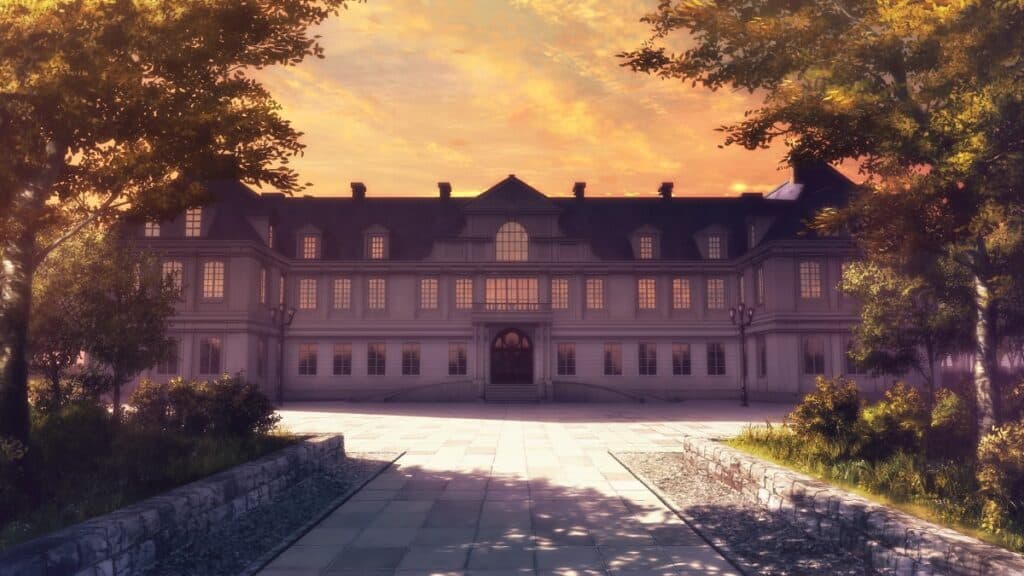
This remake of Tsukihime does not follow the same line as the more modern Visual Novels. What I mean by this is that you shouldn’t expect some extremely dynamic gameplay. In most VNs, characters usually slide in/out inside the screen as they speak and change expressions. Still, in some more recent ones, the characters may have certain animations that make it more dynamic. Tsukihime doesn’t do this. Instead, it features long screens with long texts that might seem a bit outdated for VN enjoyers. But if you enjoy extensive readings, you won’t have any problem.
The reason why I mention all these things is because the pacing might be odd for some. Initially, it seemed like a very relaxed story, even passive and slow. However, once I got deeper into it, I saw how wrong I was; it was as if the game had set me up and rubbed it in my face. I got a big surprise, but I enjoyed the pacing change. Tsukihime -A Piece of Blue Glass Moon- is a VN that rewards patience. The longer you stick around, the better the story gets. It is a slow ride that lets you take in the landscape before throwing you off a cliff with no seatbelt.
Regarding the hands-on gameplay, I was confused by the functions and controls. I had the opportunity to play Tsukihime -A Piece of Blue Glass Moon– on PS5. It wasn’t a bad thing since the game ran smoothly, but I think the port was abrupt and not very user-friendly. There was no explanation or tutorial; the story began automatically without me knowing what to do when I started the game. I was discovering the functions by chance, and this is how I found that I can use the TouchPad of my controller as a TrackPad or that the L2/R2 buttons increase and decrease the game’s speed. I repeated dialogs several times by accident, and even after three chapters, I lost all my progress because I didn’t know how the two types of save menus worked.
On the other hand, I really appreciated the FlowChart feature, where I could see the routes I had achieved and how I got them. Plus, I could go back to critical points in the story to try a different ending. This way, I could experience the other branching paths without repeating the whole story. Especially since the decisions that create the different endings feel like shallow choices. There are choices like deciding to go home or stay at school, which can lead to a Bad Ending with an untimely death. It feels a bit strange how the endings are programmed, but if you are into replayability and don’t mind meeting your demise over and over, then this won’t be an issue.
A Fresh Look
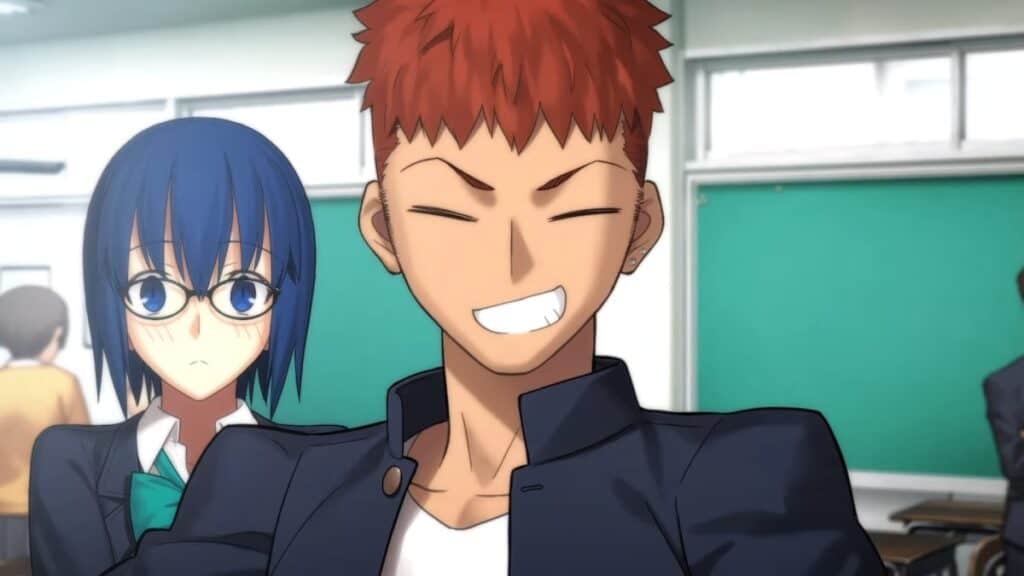
In terms of visuals, I loved the upgrade in the drawing style and stroke, especially for the characters’ faces. I even liked how they “modernized” the outfits a bit, like Arcueid’s. Also, I love the current style, like in the Fate series. However, to be frank, they often fall into the “Same Face Syndrome,” making me think that Arcueid is any of the Saber-like characters, such as Artoria or Mordred. Or how Akiha Tohno is Rin Tohsaka, and even Arihiko Inui is almost identical to Shirou Emiya, except for the haircut. Still, this only hit me initially, and the syndrome disappeared as every character has a solid and distinctive personality.
As for the environments, there is a significant amount of attention to detail, such as with the lighting or conscientiously placed objects. Each part of the city is unique, and the style makes me think of hand-drawn illustrations. Not that the original game didn’t have beautiful art; it did. However, how most scenes and characters have been modernized with new illustration techniques without losing the original feel is amazing.
As for the music, it’s not bad; it just goes a little more unnoticed in most of the game. As there are many longer, calmer chapters where we experience Shiki’s “normal” life, the music is more like background noise. The sound design shines in the fights but mostly during gore scenes. These scenes oscillate from silence to tones that make me feel the tension, creating a perfect mix of unhinged sounds. The sound effects are very realistic and, on several occasions, made my blood run cold, like the scene where a student ends up in a dark cave. This remake saves the sound for essential moments of the plot and delivers it perfectly to create a scene you won’t forget.
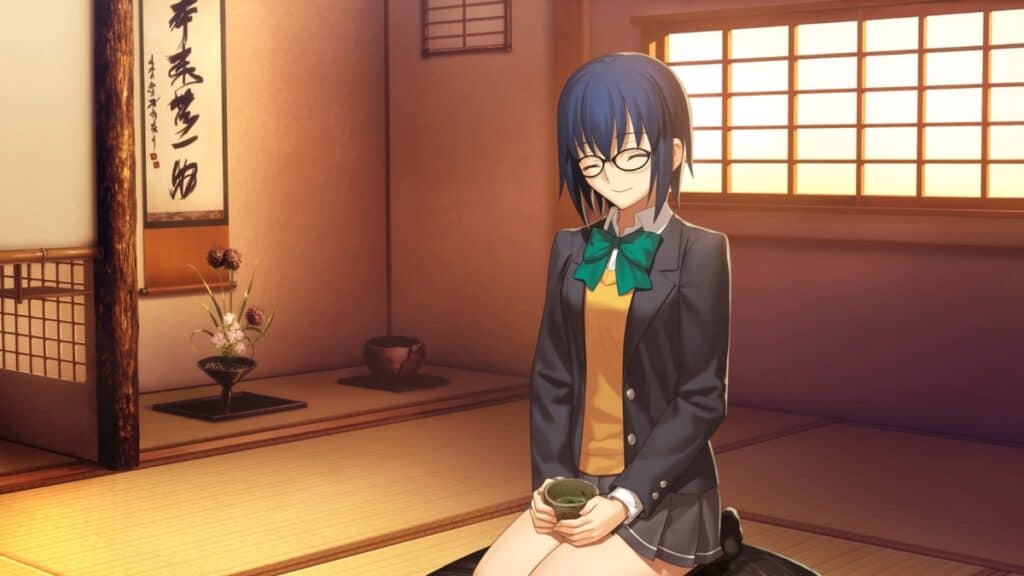
Tsukihime -A Piece of Blue Glass Moon- perfectly balances a classic VN gameplay style with a modern look. I found myself getting caught up in the story as if it were a book. Being able to interact with the world by making my own decisions and, to some extent, rewinding them was amazing. Seeing the universe expand for TYPE-MOON fans is impressive as the company has begun to make great strides to reach this side of the world.
Furthermore, this remake is a fantastic starting point for those who’ve never experienced a proper VN. Even if the gameplay might not reach the most modern standards, its storytelling is timeless. From peaceful to shocking moments or some of the most gut-wrenching gore scenes I’ve seen, Tsukihime‘s plot will stay with you for years to come. Hopefully, we won’t have to wait long for the sequel. Because even if the story is known by many, the small changes make this journey one I can’t wait to see its end.
Tsukihime -A Piece of Blue Glass Moon- (PlayStation 5 Reviewed)
Tsukihime: -A Piece of Blue Glass Moon- is the remake one of the most beloved VNs of the 2000s that brings back the intriguing storytelling, memorable characters, and shocking moments under a new light. Its narrative is second to none and remains timeless even with the new changes.
Pros
- The new story bits enhance an already fantastic plot
- Amazing new visuals
- The FlowChart mechanic is one of the best new additions
Cons
- Lack of some original routes
- The pacing might not be great for some

